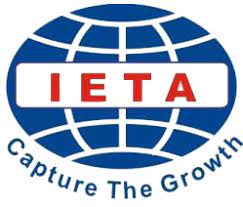Traditional Islamic boarding School Students’ Experience in Learning English through Reading based on Morphological Awareness Background: A Narrative Inquiry
 ), Dyah Sulistyaningrum(2), Rizdika Mardiana(3),
), Dyah Sulistyaningrum(2), Rizdika Mardiana(3), (1) Universitas Negeri Jakarta
(2) Universitas Negeri Jakarta
(3) Universitas Negeri Jakarta
 Corresponding Author
Corresponding Author
Copyright (c) 2024 Lingua Didaktika: Jurnal Bahasa dan Pembelajaran Bahasa
DOI : https://doi.org/10.24036/ld.v18i1.124681
Full Text:
 Language : en
Language : en
Abstract
Previous studies had shown that morphological awareness has an important role in the development of English ESP students' reading skills. However, there is still a gap in studies that specifically focus on the experiences of students in learning English through reading in various educational contexts, especially in traditional Islamic boarding schools. Therefore, this study aims to investigate (1) Students’ experience in learning English through reading in traditional Islamic boarding Schools, (2) the role of morphological awareness in learning to read, and (3) Impact of Morphological awareness on English reading ability. This research is a narrative inquiry study that aims to explore the experiences of three students from traditional Islamic boarding schools who took an English program where their morphological awareness background having an effect on learning English through reading. To collect data researchers use semi-structured interviews. Then, the data were analyzed using thematic analysis. The results of this study indicate that their morphological awareness plays an important role in their journey of learning English through reading, as indicated by their understanding of word forms, functions and structures. By integrating morphological awareness into language education, educators can enhance vocabulary development, improve reading comprehension, foster cross-linguistic transfer, and support language interrelations.
Keywords
References
Apel, K. (2014). A Comprehensive Definition of Morphological Awareness. Topics in Language Disorders, 34, 197–209. https://doi.org/10.1097/TLD.0000000000000019
Barkhuizen, G., Benson, P., & Chik, A. (2013). Research, Narrative Inquiry in Language Teaching and Learning. Routledge. https://doi.org/https://doi.org/10.4324/9780203124994
Brevik, L. M. (2019). Explicit reading strategy instruction or daily use of strategies? Studying the teaching of reading comprehension through naturalistic classroom observation in English L2. Reading and Writing, 32(9), 2281–2310. https://doi.org/10.1007/s11145-019-09951-w
Clandinin, D. J., & Huber, J. (2010). Narrative Inquiry. In P. Peterson, E. Baker, & B. B. T.-I. E. of E. (Third E. McGaw (Eds.), International Encyclopedia of Education (3rd ed., pp. 436–441). Elsevier. https://doi.org/https://doi.org/10.1016/B978-0-08-044894-7.01387-7
Creswell, J. W. (2012). Educational Research: Planning, Conducting, and Evaluating Quantitative and Qualitative Research. Pearson. https://books.google.co.id/books?id=4PywcQAACAAJ
Dong, Y., Peng, S.-N., Sun, Y.-K., Wu, S. X.-Y., & Wang, W.-S. (2019). Reading Comprehension and Metalinguistic Knowledge in Chinese Readers: A Meta-Analysis. In Frontiers in psychology (Vol. 10, p. 3037). https://doi.org/10.3389/fpsyg.2019.03037
Estaji, M., & Montazeri, M. R. (2022). Native English and non-native authors’ utilisation of lexical bundles: A corpus-based study of scholarly public health papers. Southern African Linguistics and Applied Language Studies, 40(2), 177–199. https://doi.org/10.2989/16073614.2022.2043169
Goodwin, A. P., Petscher, Y., & Tock, J. (2020). Morphological Supports: Investigating Differences in How Morphological Knowledge Supports Reading Comprehension for Middle School Students With Limited Reading Vocabulary. Language, Speech, and Hearing Services in Schools, 51(3), 589–602. https://doi.org/10.1044/2020_LSHSS-19-00031
Habiburrahim, Muhammad, Auni, L., Hafidhah, & Trisnawati, I. K. (2022). Integrating English Subject Materials into Islamic Boarding School Curriculum Context: Insights from Aceh, Indonesia. Studies in English Language and Education, 9(2), 667–684. https://doi.org/10.24815/siele.v9i2.23279
Hui, A. N. N., Chow, B. W.-Y., Chan, E. S. M., & Leung, M.-T. (2019). Reading Picture Books With Elements of Positive Psychology for Enhancing the Learning of English as a Second Language in Young Children. Frontiers in Psychology, 10, 2899. https://doi.org/10.3389/fpsyg.2019.02899
Kung, F.-W. (2019). Teaching second language reading comprehension: the effects of classroom materials and reading strategy use. Innovation in Language Learning and Teaching, 13(1), 93–104. https://doi.org/10.1080/17501229.2017.1364252
Latif, H. A. (2019). Needs Analysis of English for Specific Purposes on Islamic Boarding School Students. VELES Voices of English Language Education Society, 3(2), 136. https://doi.org/10.29408/veles.v3i2.1568
Lin, D., Sun, H., & McBride, C. (2019). Morphological awareness predicts the growth rate of Chinese character reading. Developmental Science, 22(4), e12793. https://doi.org/10.1111/desc.12793
Ludwig, C., Guo, K., & Georgiou, G. K. (2019). Are Reading Interventions for English Language Learners Effective? A Meta-Analysis. Journal of Learning Disabilities, 52(3), 220–231. https://doi.org/10.1177/0022219419825855
Lushchyk, Y., Pikulytska, L., & Tsyhanok, H. (2021). Authentic Social-Cultural Reading in Foreign Language Learning and Teaching. Revista Romaneasca Pentru Educatie Multidimensionala, 13(4), 524–542. https://doi.org/10.18662/rrem/13.4/496
Meilvinasvita, D., Safaruddin, & Yuliana. (2020). Implementation of General English and English For Spesific Purposes in Higher Education, Especially in Vocational Education. Vocational Education and Technology Journal, 1(2), 21–27. http://ojs.aknacehbarat.ac.id/index.php/vocatech/index
Pellicer-Sánchez, A., Conklin, K., & Vilkaitė-Lozdienė, L. (2021). The Effect of Pre-reading Instruction on Vocabulary Learning: An Investigation of L1 and L2 Readers’ Eye Movements. Language Learning, 71(1), 162–203. https://doi.org/https://doi.org/10.1111/lang.12430
Priskinanda, A. A., Nahak, Y., Wea, T. N., & Bram, B. (2021). Morphological Awareness Instruction for ESP Students’ Vocabulary Development and Reading Comprehension. ELT Worldwide: Journal of English Language Teaching, 8(1), 41. https://doi.org/10.26858/eltww.v8i1.19210
Yablonski, M., Rastle, K., Taylor, J. S. H., & Ben-Shachar, M. (2019). Structural properties of the ventral reading pathways are associated with morphological processing in adult English readers. Cortex, 116, 268–285. https://doi.org/https://doi.org/10.1016/j.cortex.2018.06.011
 Article Metrics
Article Metrics
 Abstract Views : 173 times
Abstract Views : 173 times
 PDF Downloaded : 45 times
PDF Downloaded : 45 times
Refbacks
- There are currently no refbacks.
Copyright (c) 2024 Lingua Didaktika: Jurnal Bahasa dan Pembelajaran Bahasa

This work is licensed under a Creative Commons Attribution-NonCommercial 4.0 International License.










